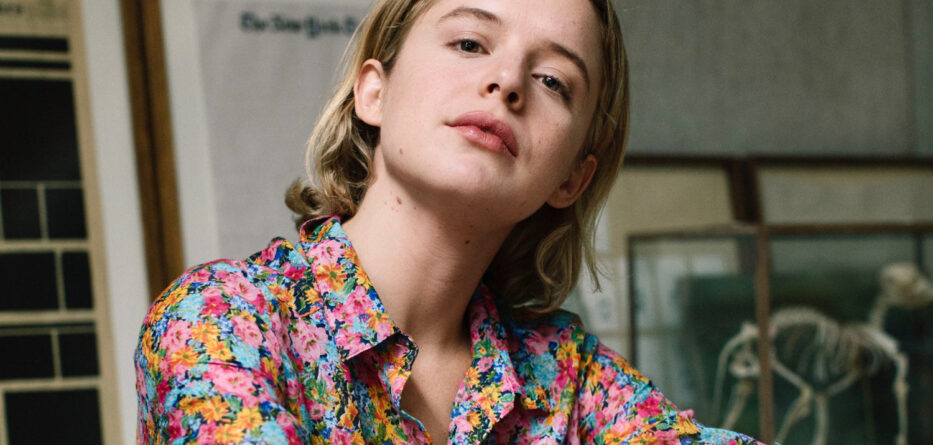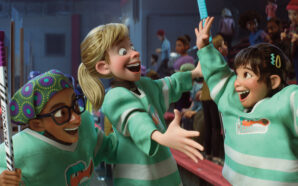Arturo Hilario
El Observador
Recently I spoke with actress Naian González Norvind about her role in the thrilling and controversial Mexican film by Michel Franco, “New Order” (“Nuevo Orden” in Mexico).
The film won one of the top prizes, the Silver Lion Grand Jury Prize, at its premiere at the 77th Venice Film Festival in 2020 and continues to spark conversation with its themes of social and wealth inequality, discrimination, and corruption.
The drama/thriller stars González Norvind as Marianne, who we find consumed by her busy wedding day festivities taking place at her home in an upper-class region of Mexico City. With only the drama and stakes involved with a typical wedding day at first, we steadily start to see what unrest is brewing beyond the secure high walls of the Mexican elite, where we are led into an increasingly chaotic story of how Marianne and others around her deal with a law-and-order breakdown, corruption, and violent social upheaval.
The following is a conversation about “New Order” with González Norvind, her experiences working on this dystopian film, and its lasting impact on her.
Hello Naian, thanks for the time. To start off I wanted to ask if you could set the stage for the beginning of the film and what your character Marianne is up to?
In the beginning of the film, when it starts, Marianne is enjoying her wedding day and she’s about to get married in her family home. The problem then comes up when – the issue is that you can tell that there’s been some social unrest that then explodes the day of this wedding. And it kind of just blows apart the lives of four or five characters that intertwine in various ways. Including Marianne’s.
And what was it that attracted you to the script and the story in the messaging of the film?
I think very naturally, what first attracted me was the urgency and the relevance of the subjects that that this film was putting on the table, you know, and how it was criticizing society, the way in which we have structured society – that leave so few with so much; with so many resources and so many with so few resources, and that social inequality is something that I thought was really important to talk about, that social unrest, that discontent. Also, how much we participate on an individual level in those labyrinths of corruption and of impunity that we criticize but that we don’t do anything about.
So that was the first thing. Then also working with Michel and the challenge of playing such a hard part or the character that goes through so much.
Now, what was the process like for you to bring the character of Marianne to life? And did you get an inspiration from anywhere?
Yeah, Michel actually wrote the part for me. He named her Marianne because it rhymed with Naian. And so, there’s a lot of common elements between Marianne and I, mainly, I think our temperament and our desire to help others. From what he told me; I’m not going to be that self- flattering! But then also what happened was he gave me a few film references that he was inspired in himself to do this film.
Films by Buñuel like “Viridiana” and films by Pasolini, “Melancholia” by Lars von Trier, another film where marriage, you know, a wedding day goes haywire. And I did research on my own and I read some testimonies about abuse, about women who have found themselves or people who have found themselves in situations as dire as what Marianne goes through, just to have like a real-life reference for myself to empathize with.
Could you expand a little bit on what it was like working on set with Michel and working on something like “New Order”?
Well, as you know, the first part of the of the film is in the family’s home and it’s the wedding scene and everything. And it was like dancing with the camera. It was long shots where you go from this character to this next one, etc. So, you felt like you were part of a bigger machinery. You’re like a little screw in a little machine, in a bigger machinery, and everything had to coincide and be synchronized perfectly so that the shot would work.
So, it was really demanding in that way, and you had to be hyper focused, which is what Michel was always asking of us. And I really enjoy that kind of challenge where you have to hit your mark perfectly, your eyes turn to the right at that exact moment when you see that person, you move when they move, et cetera. So, it does it feels like an orchestration of some sort. And that was really fun to do.
And then the language of the film changes visually and everything starts going down the drain. And that challenge was different. It was more of an emotional situational challenge, more than a kind of craftsman challenge, you know.
What would you say was a takeaway for you personally or a lesson from working on this film now that it’s out and in the world?
[There’s] So many, from actually doing it and learning how to work with a new and different director, every experience, every movie or series or play is an opportunity to connect in a different way with other people, with other actors or your director to understand someone else’s point of view, including the characters.
And so that I take with me first and foremost and then also the beautiful experience that has been just everything that’s happened after the film was finished and going to the Venice Film Festival and seeing how the film was received there and how it did so well.
And then the San Sebastian Film Festival, Toronto, the controversy, and the conversation that it engendered in Mexico, which is what Michel wanted in the first place.
I think it’s a film that does not leave you indifferent and it definitely doesn’t leave me indifferent after I watched it. It was funny how big of an impression it made on me, despite having made it right, despite having participated in it and knowing what was going to happen, I was still very shaken by what I saw.
Keeping in mind the ideas of wealth inequality, social unrest, and even color divisions, what do you hope that audiences take away from the film?
That violence begets violence, that to understand that and that truly, if we want to make a change collectively, we have to make a change in ourselves. I hope that people are so shaken as I was after seeing the film that they question, you know, what part they play into the status quo, right? Into these same paradigms that we live by. And how much of society is structured [benefitting] a few and is to the detriment of so many.
And I think that, you know, the film forces you to you have to question your own privilege and the way you treat people. And that’s also why I wanted to do it in the first place.
Thank you so much, Naian, I was wondering if there is anything else you’d like to add?
No, only that I’m super excited that it’s coming out in the US on Friday. And I hope to see all of people’s reactions and opinions. I think that’s what cinema can do for the world, like not purely serve us only as entertainment, but to really make us think about ourselves.






